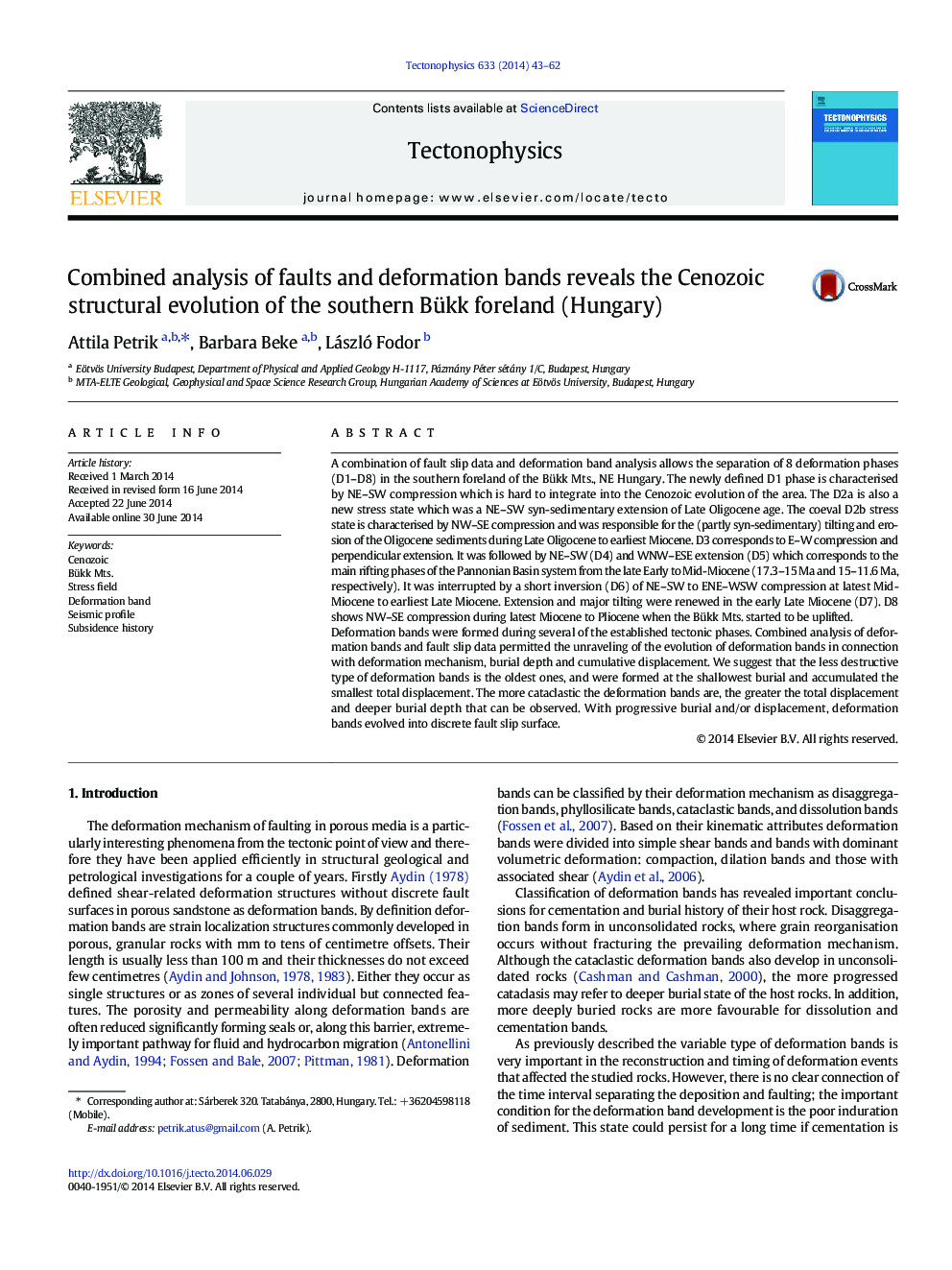| کد مقاله | کد نشریه | سال انتشار | مقاله انگلیسی | نسخه تمام متن |
|---|---|---|---|---|
| 6433798 | 1636758 | 2014 | 20 صفحه PDF | دانلود رایگان |

- 8 deformation phases were determined.
- Deformation band type reflects stress field evolution.
- More intense cataclasis occur at deeper burial.
- Important Late Miocene post-rift deformation was demonstrated.
A combination of fault slip data and deformation band analysis allows the separation of 8 deformation phases (D1-D8) in the southern foreland of the Bükk Mts., NE Hungary. The newly defined D1 phase is characterised by NE-SW compression which is hard to integrate into the Cenozoic evolution of the area. The D2a is also a new stress state which was a NE-SW syn-sedimentary extension of Late Oligocene age. The coeval D2b stress state is characterised by NW-SE compression and was responsible for the (partly syn-sedimentary) tilting and erosion of the Oligocene sediments during Late Oligocene to earliest Miocene. D3 corresponds to E-W compression and perpendicular extension. It was followed by NE-SW (D4) and WNW-ESE extension (D5) which corresponds to the main rifting phases of the Pannonian Basin system from the late Early to Mid-Miocene (17.3-15Â Ma and 15-11.6Â Ma, respectively). It was interrupted by a short inversion (D6) of NE-SW to ENE-WSW compression at latest Mid-Miocene to earliest Late Miocene. Extension and major tilting were renewed in the early Late Miocene (D7). D8 shows NW-SE compression during latest Miocene to Pliocene when the Bükk Mts. started to be uplifted.Deformation bands were formed during several of the established tectonic phases. Combined analysis of deformation bands and fault slip data permitted the unraveling of the evolution of deformation bands in connection with deformation mechanism, burial depth and cumulative displacement. We suggest that the less destructive type of deformation bands is the oldest ones, and were formed at the shallowest burial and accumulated the smallest total displacement. The more cataclastic the deformation bands are, the greater the total displacement and deeper burial depth that can be observed. With progressive burial and/or displacement, deformation bands evolved into discrete fault slip surface.
Journal: Tectonophysics - Volume 633, 21 October 2014, Pages 43-62